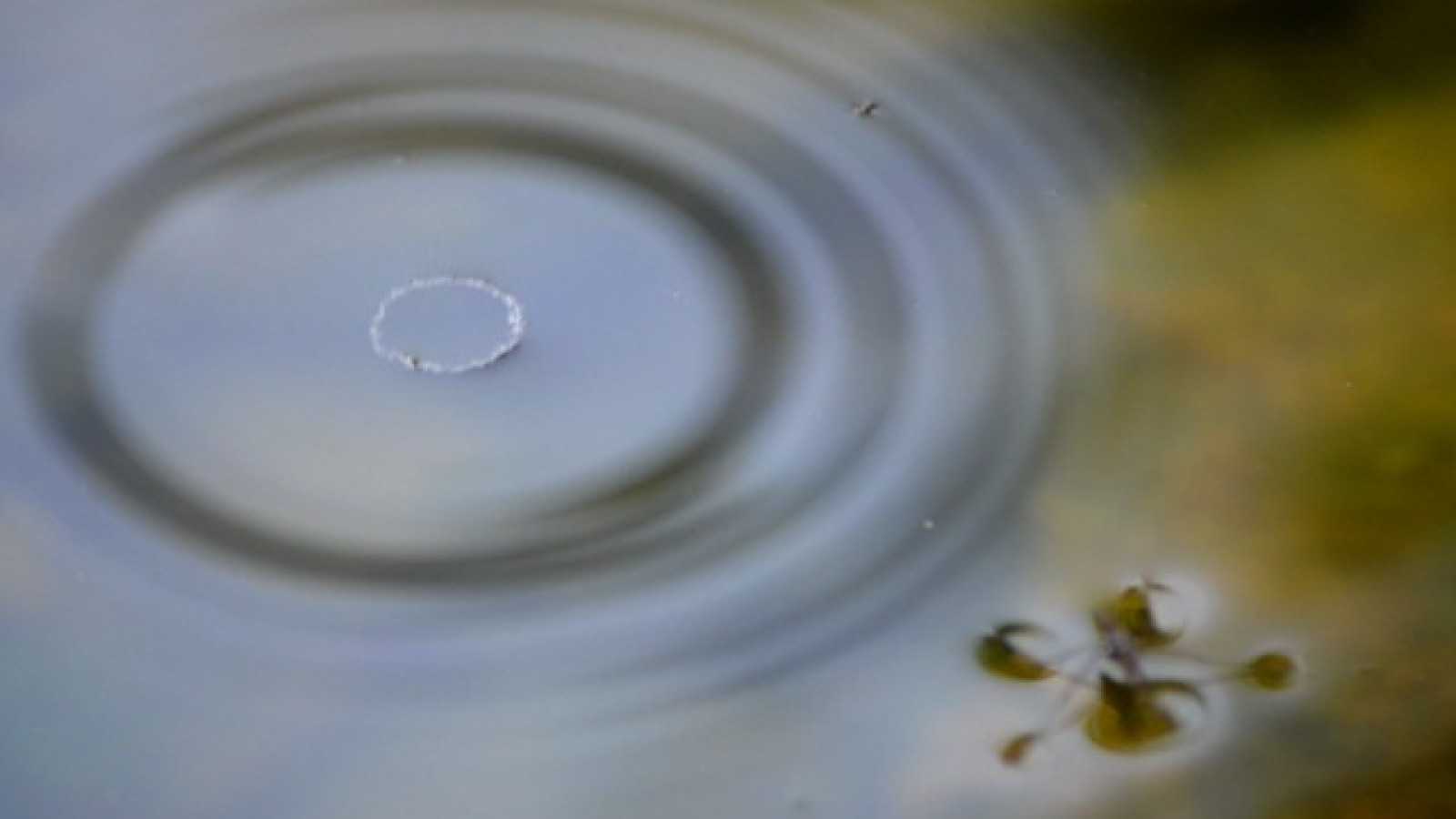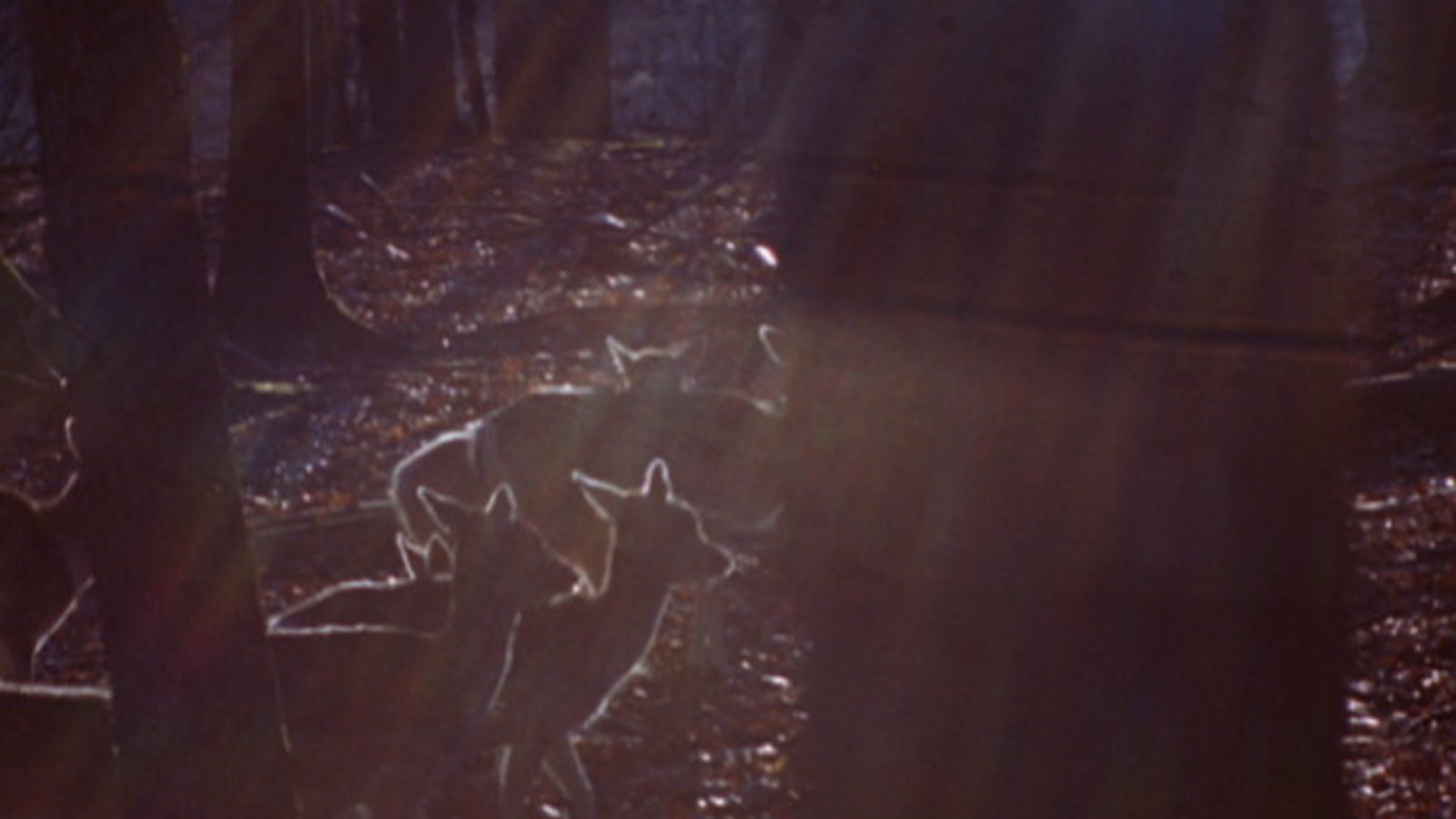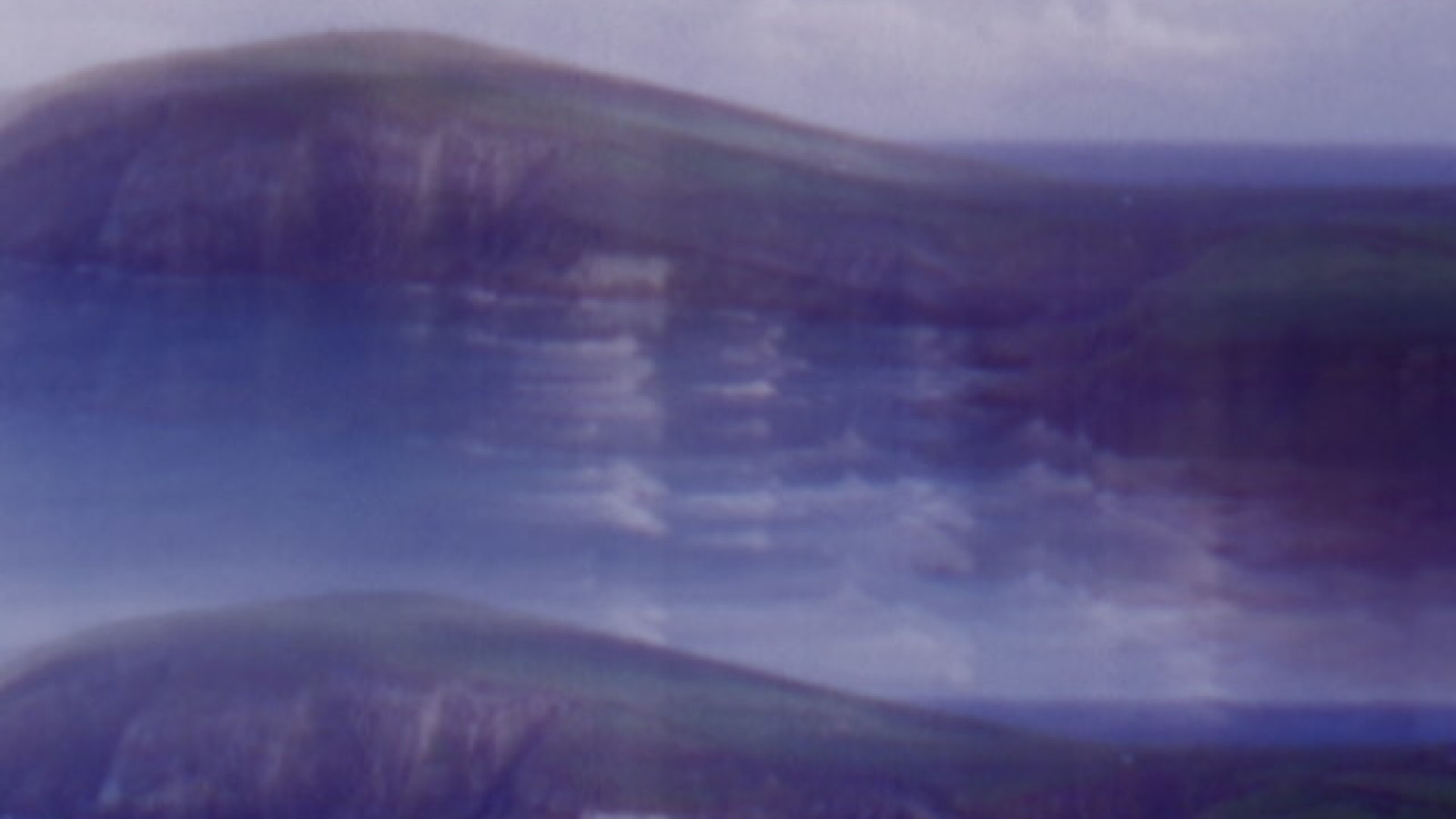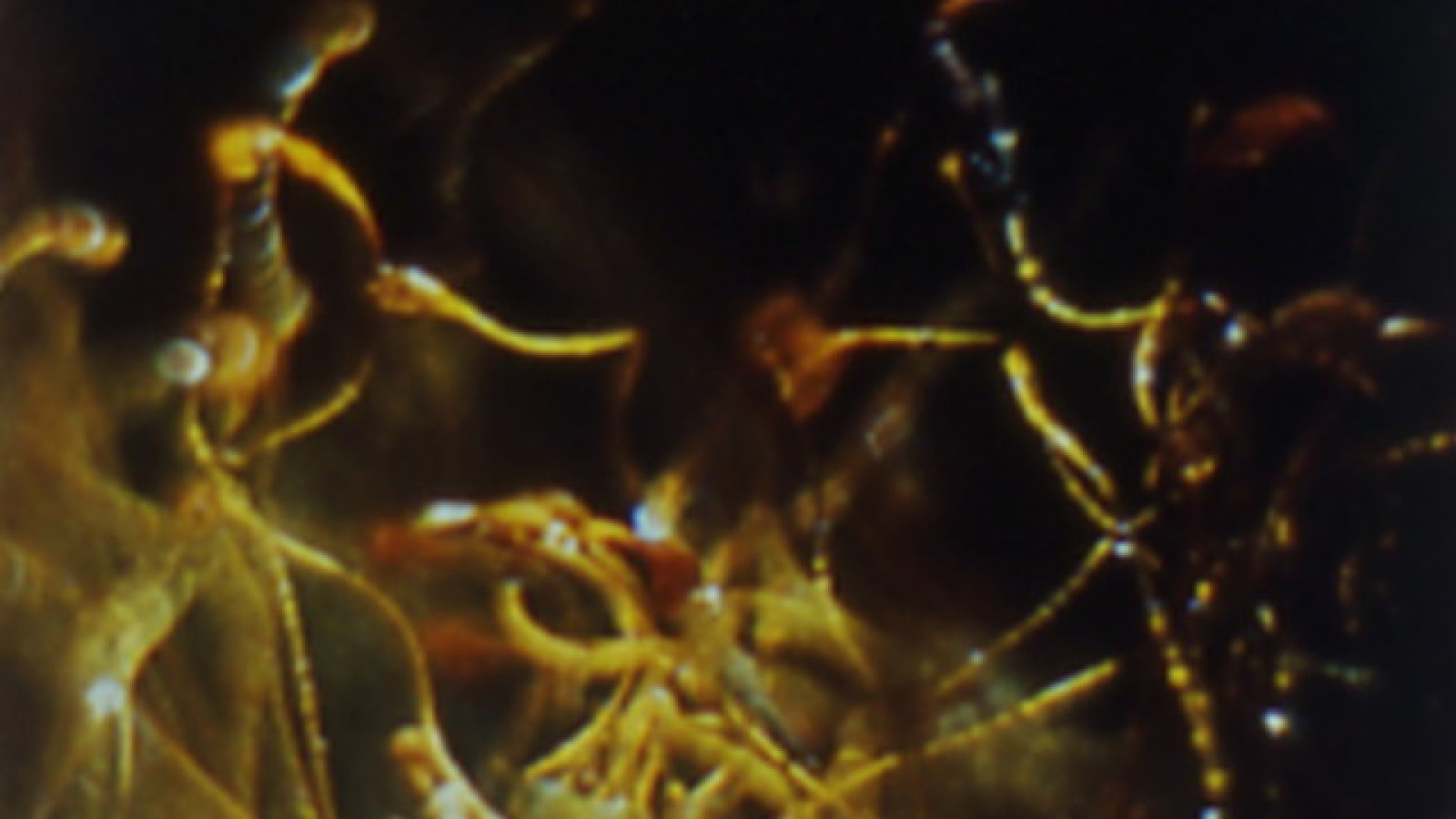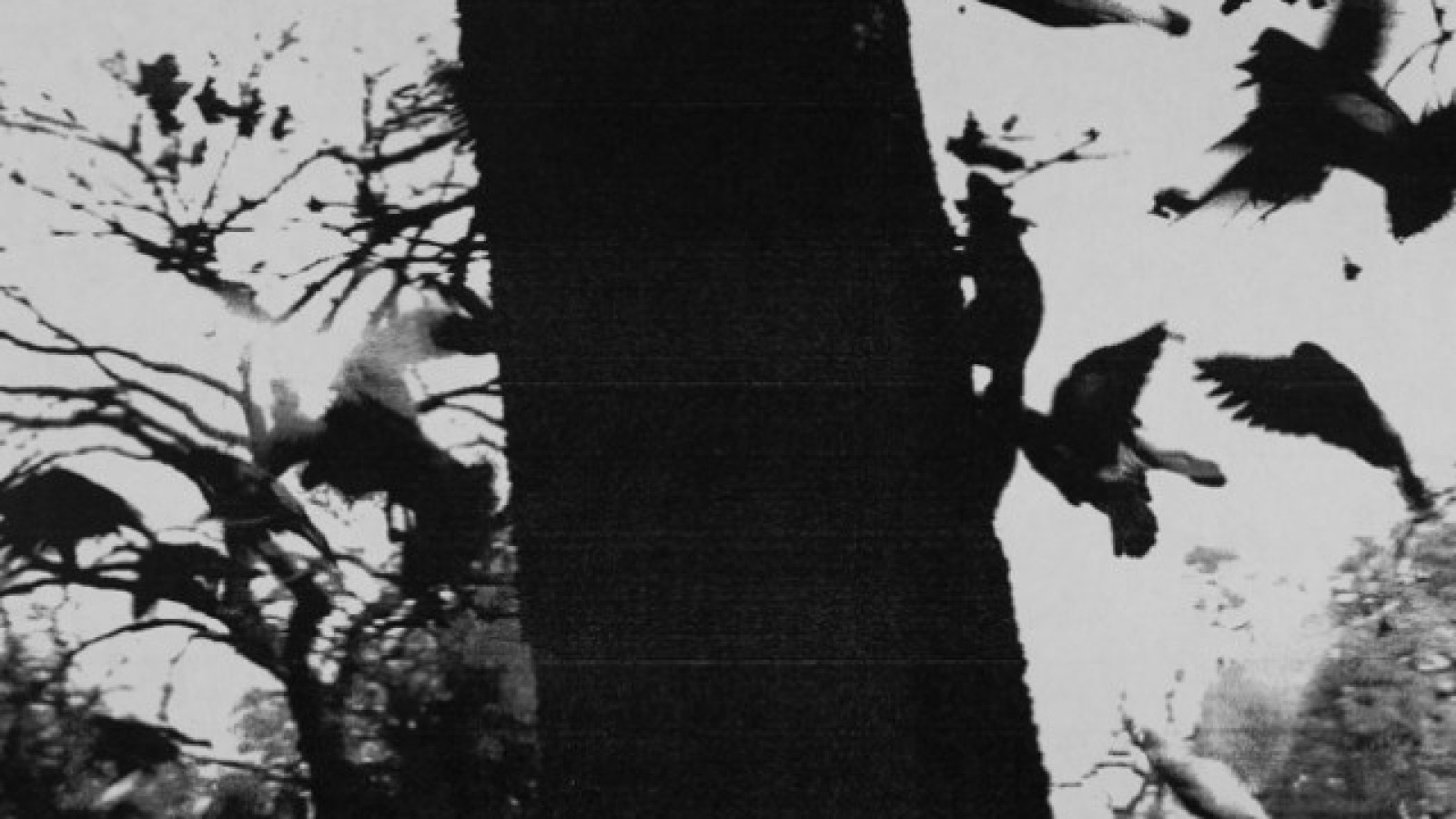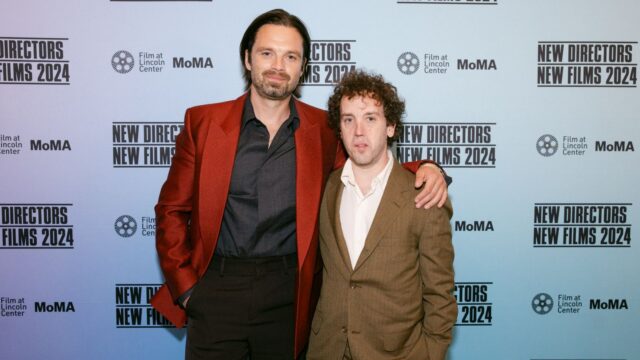Program 26: Written on the Wind
murmurations. Rebecca Meyers, USA, 2013, 5:40min.
Aviary. Katherin McInnis, 2013, 5:00min.
verses. James Sansing ,USA, 2012, 4min.
Experiments in Buoyancy. Calum Walter, USA, 2013, 4:30min.
Handful of Dust. Hope Tucker, USA, 2013, 8:46min.
Burrow- Cams. Sam Easterson, USA, 2012, 3min.
True-Life Adventure I, Erin Espelie, USA, 2012, 5 min
True-Life Adventure II, Erin Espelie, USA, 2013, 5 min
True-Life Adventure III, Erin Espelie, USA, 2013, 6 min
Looking Glass Insects Charlotte Pryce, USA, 2013, 4:02min.
A Study in Natural Magic. Charlotte Pryce, USA, 2013, 3:28min.
Animals Moving to the Sound of Drums. Jonathan Schwartz, USA, 2013, 8min.
Painter and Ball 4-14. Pat O’Neill, USA, 2011, 10min.
After Creation After Icebergs. Mary Beth Reed, 2013, 2:26min. (16mm)
murmurations. Rebecca Meyers, USA, 2013, 5:40min.
A charm; siege; dissimulation. Descent and watch. Avian voices link gesture and snowfall, macro views of whiskered branches and furry firs. –R.M.
Aviary. Katherin McInnis, 2013, 5:00min.
Pigeons (or doves) are filthy and useful, secret and ubiquitous, passenger and carrier. A metaphor for communication as weapon and war casualty. –K.M.
verses. James Sansing ,USA, 2012, 4min.
Verses is a film that animates old water damaged and moldy books. The books are juvenile hall ledgers from the 1940's – 1960's. The ledgers were written by councilors on the daily observations of the children in their charge. The Rorschach patterns that have naturally formed in the books remind one of the psychological impact this institution had on the children detained there.
-J.S.
Experiments in Buoyancy. Calum Walter, USA, 2013, 4:30min.
Experiments in Buoyancy explores the incommensurate, and the tendency of both the living and the inanimate to submit to gravity. All images were filmed digitally, printed frame by frame onto paper, then re-photographed/animated. Pixels and toner fight abrasion and decay, moving in and out of legibility, presenting the moving image as inherently unstable.
Handful of Dust.</em> Hope Tucker, USA, 2013, 8:46min.
Light the fire and I’ll show you something
Something invisible if you don’t look to see it
Something that cannot be heard if you don't care to listen to its breath
Light the fire and I’ll show you fear in a HANDFUL OF DUST
Prussian blue can be used to render images and counteract radiation
poisoning.
This obituary is composed of sequences of cyanotypes, exposed in the sand using paper sensitized with handmade emulsion and negatives from a 1954 film. Rates of cancer in the film’s cast and crew reflect that it was set downwind of the Nevada Test Site during the era of above ground nuclear testing. HANDFUL OF DUST, produced in the Utah canyon where the 1954 film was shot, is designed as an antidote to recover the memory of the downwinders.
BurrowCams. Sam Easterson, USA, 2012, 3min.
True-Life Adventure I, Erin Espelie, USA, 2012, 5 min
True-Life Adventure II, Erin Espelie, USA, 2013, 5 min
True-Life Adventure III, Erin Espelie, USA, 2013, 6 min
In this series, Nature wrote the screenplays, as Roy Disney once said, and the following places and periods were documented in the same vicinity of Gold Run Creek in the Rocky Mountains of Colorado:
3 square feet in 3 hours on the summer solstice (True-Life Adventure I)
30 square feet in 3 hours on the winter solstice (True-Life Adventure II)
0.3 square feet over 30 days in late summer (True-Life Adventure III)
—EE
Looking Glass Insects Charlotte Pryce, USA, 2013, 4:02min.
Looking Glass Insects takes its title from chapter three of Through the Looking Glass and its classic original illustrations by John Tenniel. Delighting in the act and play of observation the film finds a visual metaphor for the cinematic process in the antics of the original story; making use of magnifying glasses as an optical pun, pointing to the instruments used by both entomologists and filmmakers alike. Yet the insects of the story fade away, just as the observations that appear in the film’s magnifying glass dissolve into darkness when tilted to reflect the “natural” world beyond the book. –C.P.
A Study in Natural Magic. Charlotte Pryce, USA, 2013, 3:28min.
Witness an alchemist’s spell: the transmutation of light into substance: a glimpse of gold. –C.P.
Animals Moving to the Sound of Drums. Jonathan Schwartz, USA, 2013, 8min.
That fall it was not intentional to have a Galway Kinnell book on the table near where the caterpillar in the doorway, feeding on our offerings, became the butterfly, feeding on honey water, staying in our house until we let it go. Or it was not known about the deer in Putney or that the baby birds in the raspberry bushes would cry to us in summer. A beloved, old friend once visited Vermont to do some work for Galway Kinnell and she described a stone table in the field where they ate meals in the afternoon – it sounded like a song and so I looked at the book and from Little Sleep's-Head Sprouting Hair in the Moonlight here is that line: “The still undanced cadence of vanishing”. –J.S.
Painter and Ball 414. Pat O’Neill, USA, 2011, 10min.
Painter and Ball 4-14 is a composite of several simultaneous intentions. The first is a record of the passage of days and seasons as seen through a studio window, that it, a familiar domestic space: the second is a similar recording made by another artist some thirty years previously, who died soon after making it: the third, an animation of a headless and limbless homunculus, enacting a series of ritual dances.
Painter and Ball 4-14 is a conversation between two filmmakers, one living and the other deceased. Richard Matthews began filming out the window of his tiny Kansas studio in 1976, recording the passing of days and seasons with his Bolex. He was new to the Midwest, having moved there from Los Angeles a few years before, and he loved this little grove which totally transformed from shady and closed in summer to open and barren in winter.
Richard didn't live to finish his intended film, and the Ektachrome originals came into my possession, where they rested until 2010. That year, I made a similar recording of a piece of woodland just outside my studio in Pasadena. This film had a shorter duration- from March to August, from green to brown, in a total of fifteen shots.
In editing, the two recordings were placed one upon the other, so nightfall in Kansas became morning in California, and so on. To this was added another piece of action- a short roll I had shot many years before and then put aside, of a papier-mache manikin the size of a small child, a torso, genderless, headless and limbless, yet capable of motion about its own axis.
This child-manikin enacts a series of rituals in which energy seems to enter its body through contact with the soft furry object causing it to roll and twitch spasmodically, as in rapture or pain or ecstasy. As this dance unfolds, small, brightly colored symbols appear in the lower right corner: A pouring of paint, a dropped book, and a thrown pistol- each appearing alone or in combination, as if to signal a cycle of states of mind. These objects distill and display colors which are otherwise absent in the picture.
The title refers to the location, on a tract map, of the main image. Mr. Painter and Mr. Ball were land developers in the 1880s and later, in Pasadena, California, who lent their evocative names to dozens of residential tracts. Images provoked by their two names have haunted me for the last dozen years.
After Creation After Icebergs. Mary Beth Reed, 2013, 2:26min. (16mm)
Inspired by Frederic Church’s painting Icebergs, which he completed after traveling to Labrador in 1859, and distant memories of Stan Brakhage’s anecdotes about filming Creation in 1979, also inspired by Church’s paintings. Brakhage apparently shot some of the footage for Creation in Alaska while kayaking near icebergs with a guide. At the end of the trip, the guide upset Brakhage when he mentioned that if they had made too much noise while paddling past the bergs, they might have caused an iceberg avalanche that could have crushed them.—M.B.R.
October 6 at 5:30pm (FBT)

